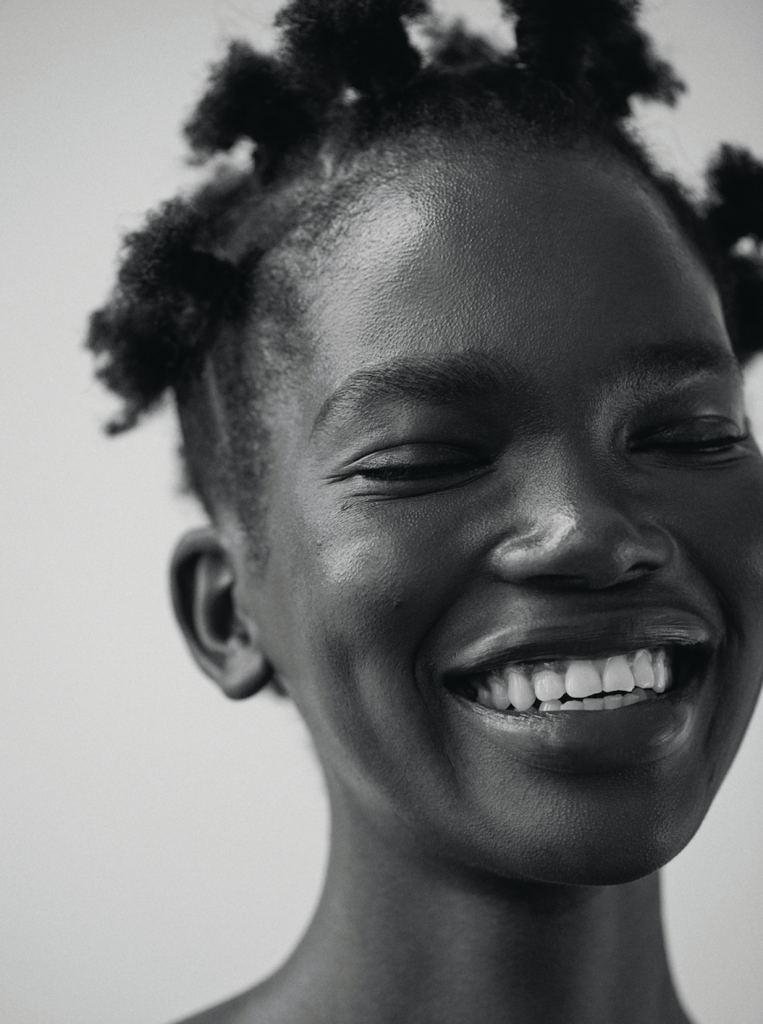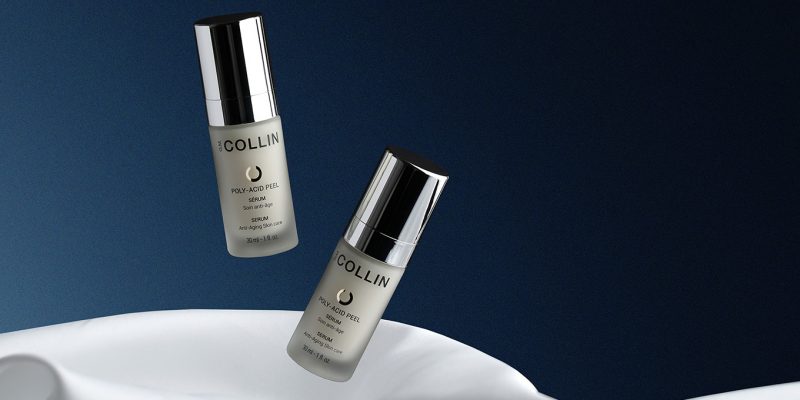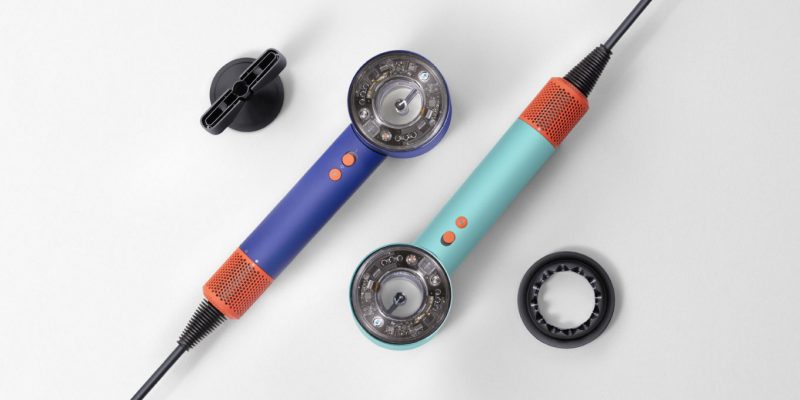Health & Fitness
Glowing White Teeth Have Become a Symbol of Wealth–Why?
It's the million dollar smile.
by : Gabrielle Lisa Collard- Jul 15th, 2022

PHOTOGRAPHY, AMY TROOST/TRUNK ARCHIVE
I don’t know when I first started thinking about getting my teeth fixed and whitened, an endeavour I’ve been considering for a few years now. Though they’re not perfect, my teeth never bothered me until I was in my early 30s, as if, over time, my idea of an acceptable smile changed until it no longer included my own. In 2018, when I was rewatching Legally Blonde for the first time since it came out, I became aware of the evolving standards of the ideal smile. Reese Witherspoon, undoubtedly one of the greatest—and most beautiful—stars of her generation, had yellow teeth. I was shocked, not because they were particularly bad but because my brain had gradually gotten used to seeing whiter and whiter teeth—to the point where they’d become practically blinding—onscreen.
The “American smile,” according to Dr. Alexandre Zappa of Zappa Dentiste in Montreal, came by its name honestly. “It’s a decidedly American trend,” he says. “You just have to watch the stars on European red carpets to realize that the relationship to smiling is completely different, depending on where you are. It’s totally cultural.” Over the two decades since that hit comedy was released, the artificially perfect Hollywood smile has become the norm, although achieving it is only possible for those who have the money to pay for it.
“Humans have always seen the smile as a symbol of beauty,” says Mary Otto, author of Teeth: The Story of Beauty, Inequality, and the Struggle for Oral Health in America. “Even in the 1800s, this country’s early dentists wrote that teeth bring radiance and symmetry to the face.” But it was the invention of the camera, which could not only capture but also reproduce a person’s image, that eventually contributed to making teeth an important measure of attractiveness. The growing popularity of movies, with faces and mouths projected onto giant screens, only increased the demand for perfectly white, straight smiles—first among celebrities and then trickling down to average people.
In real life and onscreen—where a smile alone can distinguish a prince from a pirate—the condition of teeth is often closely linked to things like social status, education and cleanliness. And good teeth are an investment. “Although there are many social determinants of oral health, we often conclude that it comes down to personal responsibility,” says Otto. “Sure, you can brush your teeth or not, but considering that dental and orthodontic care is hard to come by for much of the population, it’s far from a simple matter of choice.” Seeing dental health as separate from overall health further contributes to making a healthy, aesthetically perfect smile a privilege reserved for the wealthy.
 PHOTOGRAPHY, MARY FIX/GALLERY STOCK
PHOTOGRAPHY, MARY FIX/GALLERY STOCK“For me, the phenomenon of the perfect smile follows the same trajectory as many other beauty standards,” says Stephanie Leonard, a psychologist specializing in the treatment of eating disorders, eating behaviours and body image. “Since we see the perfect smile everywhere and we are more and more conditioned to it, it has become the new norm and we’re supposed to feel guilty about deviating from it.” Leonard says that she sees more and more adults seeking orthodontic treatment that their parents denied them when they were younger. In some cases, these are adolescent hang-ups that they want to treat now that they can afford it and are able to make more informed decisions about their own bodies.
According to Zappa, while it’s impossible to deny the influence of celebrities and images shared on social media, it’s possible to get your dream smile while also prioritizing your mental, physical and emotional health—as long as you’re patient and in good hands. “There is no shame in your teeth being crooked or not perfectly white,” says Zappa. “The most important thing is to find a dentist with whom you feel comfortable, who will listen to you and never judge and who will take the time to explore different options with you and answer your questions. Some cosmetic procedures can cause long-term damage, and healthy teeth should never be compromised for purely cosmetic reasons. Transforming your smile can be a wonderful gift you give yourself as long as it is done with respect and consent.”
In his practice, Zappa always allows six to 12 months after the initial consultation before beginning major cosmetic procedures, an approach that allows him to observe the evolution of his client’s mouth and needs. He notes that it’s best to be patient and wait for the ideal conditions, which reduces stress and the risk of complications. “Sometimes simply taking care of dental health—with a small veneer or simple whitening, for example—will be enough to satisfy someone who initially wanted to opt for more serious treatments.”
 PHOTOGRAPHY, AMY TROOST/TRUNK ARCHIVE
PHOTOGRAPHY, AMY TROOST/TRUNK ARCHIVE“Since we see the perfect smile everywhere and we are more and more conditioned to it, it has become the new norm and we’re supposed to feel guilty about deviating from it.”
In response to growing demand, many less expensive and less invasive techniques for realigning and whitening teeth are emerging all the time. “Orthodontic treatments using removable shells, like Invisalign, are among the most popular treatments in recent years,” says Dr. Danièle Larose of Santé Dentaire Larose in Ville-Saint-Laurent, Que. “We also do a lot of artistic composite reconstructions, which are very realistic and done in one appointment. The procedure allows us to lengthen teeth and fill spaces in a completely reversible way and without damaging the tooth.” As for her clientele, Larose reports that it is primarily adults who come to her office for cosmetic procedures. “With the increase in people working from home, more of them are seeking our services,” she says. “Seeing their faces all day on Zoom or Teams has made them annoyed with their little imperfections.”
Having a “perfect” smile can certainly make us feel better about ourselves—which is unsurprising in a world where there’s so much emphasis on physical appearance—however, it’s not magic. When it comes to beauty, self-confidence and authenticity go a long way. Will I fix my teeth one day if I can afford it? Probably. But until then, I’ll continue to show the world my biggest smile.
DOLLAR FOR DOLLAR
Orthodontic treatment with removable braces: From $2,000 to $10,000 or more, depending on the degree of complexity.
Professional whitening: From $200 to $1,000.
Artistic composite reconstruction: From $175 to $895 per tooth.
Porcelain veneers: From $900 to $2,500 per tooth, depending on the degree of complexity.
TOOTH TIP
Cosmetic treatments are usually less expensive through a general dentist than through a specialist. Since 2020, some dental hygienists have been authorized to perform teeth whitening in private practices.
Newsletter
Join our mailing list for the latest and biggest in fashion trends, beauty, culture and celebrity.
Read Next

Fashion
Bella Hadid Glows in a Strapless Lace Dress With a Sheer Corseted Bodice
Hadid was also seen that same day promoting her new fragrance brand ‘Ôrebella.
by : Briannah Rivera- May 3rd, 2024

Fashion
This Year’s Indigenous Fashion Arts Festival Is Sure to Impress
"Creating an opportunity for us to work collectively—prioritizing language and tradition—is of the utmost importance. Our similarities are inspired and shaped by the legacies left to us by our ancestors.”
by : Kelly Boutsalis- May 3rd, 2024

Beauty
This Exfoliating Serum Creates a ‘‘New Skin’’ Effect
Say hello to smooth, radiant skin.
by : ELLECanada.com- May 2nd, 2024




